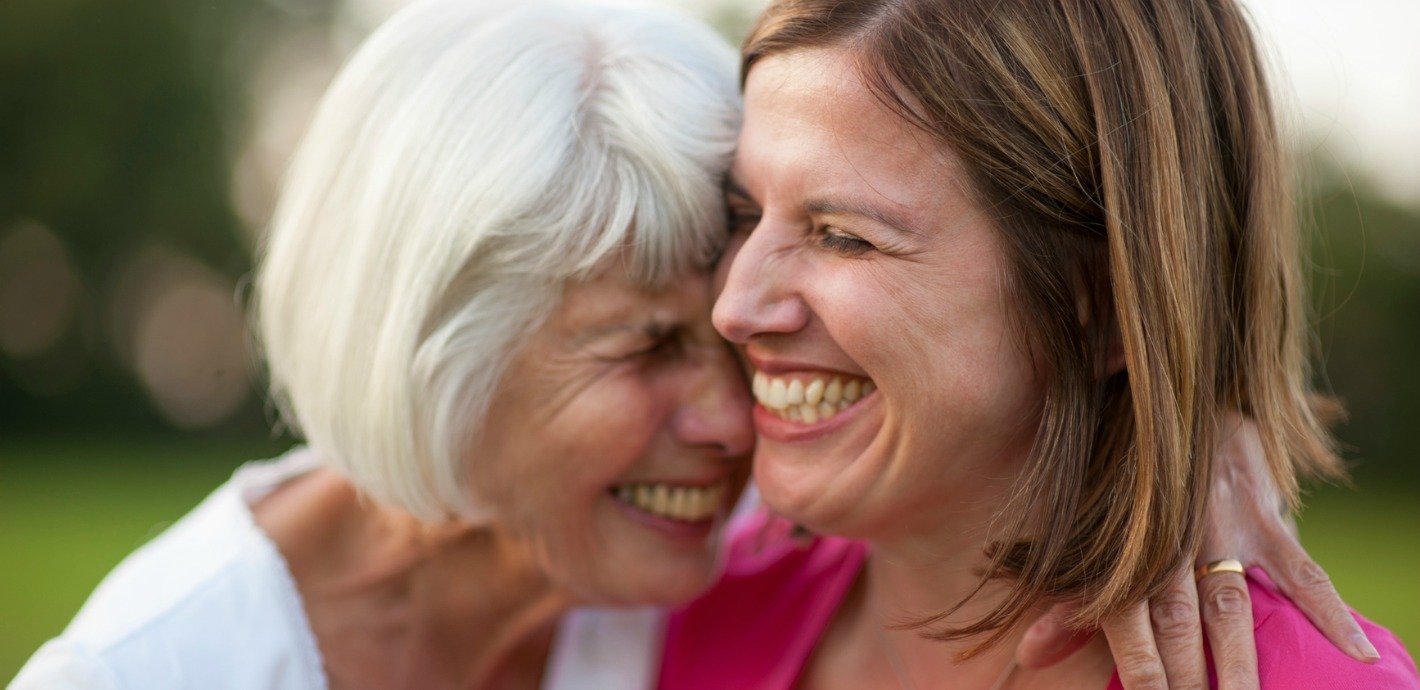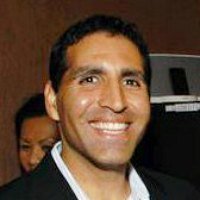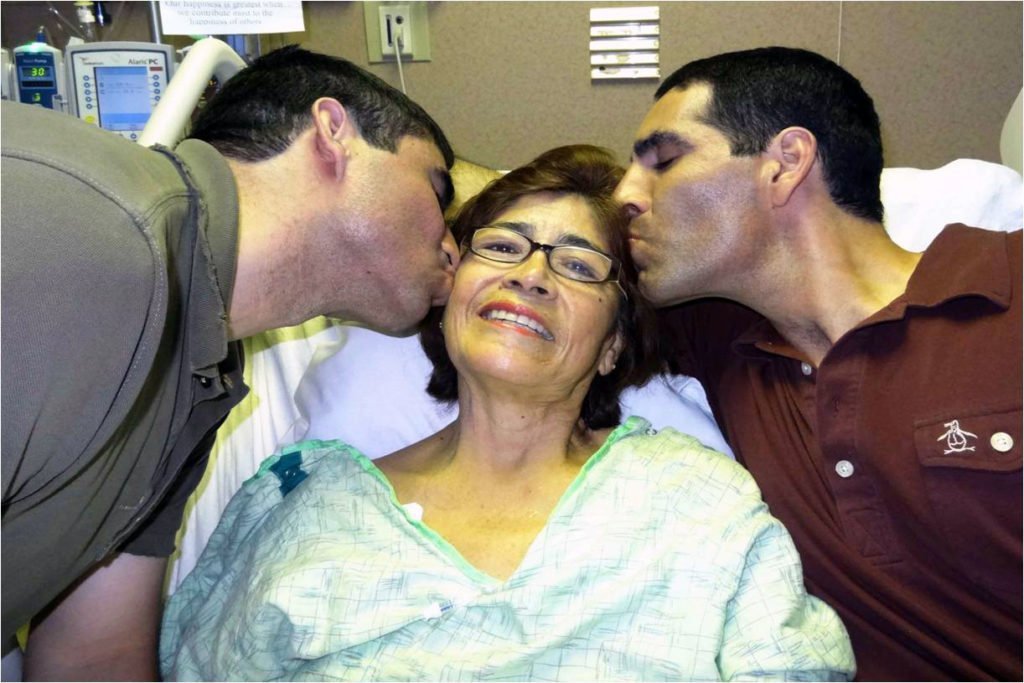I remember the exact moment I received the call from the doctor that my mom had stomach cancer. It was June 2012, I was in my office and John Mayer’s “The Heart of Life” was playing in the background. The poignant lyrics hit me like a ton of bricks: “You know it’s nothing new, Bad news never had good timing.”
The doctor said that it was an adenocarcinoma—a word I’d never heard. My 67-year-old mom, who ate organic, played volleyball every Sunday, danced every weekend and was one of the healthiest people I knew had been diagnosed with a very aggressive and deadly form of cancer. That weekend, I took an indefinite leave from the accounting firm that I co-owned with my brother in Washington, D.C. and flew to Gainesville, Florida, to help my mom recover from surgery and begin chemotherapy. And just like that, I became one of the 43.5 million Americans who we don’t even know exist until we become one: A caregiver.
The Family Caregiver Alliance defines caregivers as anyone providing unpaid assistance and support to family members or loved ones who have physical, psychological, or developmental needs. While most caregivers tend to their aging parents, 14 percent of caregivers care for a child with special needs. More than 66 percent of caregivers are women, and the average American caregiver is a 49-year-old female, balancing a full time job and 20 hours a week caregiving. Millennials (adults age 18 to 34) make up nearly 25 percent of all caregivers, and are just as likely to be men as women. Perhaps most challenged are those in the sandwich generation—adults who will need to care for their children and their parents while working a full-time job.
While prevalent and growing, 15 percent of caregivers don’t self-identify as so-called caregivers according to a 2001 AARP study on caregiver identification. Reasons include fear of discrimination at work and isolation from friends. But by not self-identifying, caregivers risk not fully addressing the requirements of the service and missing out on workplace eldercare benefits and helpful social programs within their community. I hadn’t even heard the term until we had left the hospital after my mom’s second surgery, and the doctor suggested we hire a professional caregiver to which I responded, “I’ll be my mom’s caregiver.”
Related: The Importance of Contemplative Practice for Caregivers
“Choosing to engage in caregiving is empowering,” says Amy Goyer, AARP Family & Caregiving expert and author of Juggling Life, Work and Caregiving. “Engaged caregivers don’t have as many regrets because they did everything they could, but just as important are the unique experiences gained from caregiving. It’s intimate and intense, and the rewards of the relationship evolving are incredible. When I would tuck my mom in bed at night, [and see] the happy, content, safe look on her face, there aren’t words.”
Echoing this sentiment is 35-year-old Brian Wilson, whose experience of moving back home to live and care for his parents was recently featured on Humans of New York, the wildly popular blog and bestselling books featuring street portraits and stories of strangers. In 2015, he moved from Florida to New Jersey to help his mother care for his father, who is battling Stage 3 esophageal cancer.
“Although I’m giving, I’m receiving much more. The joy of helping them, the reward of spending time with my parents, the satisfaction of them getting good care—it means everything,” Wilson says. “Some days are not the best day, but I’m so grateful for this time with my parents. The trust and understanding, it’s so deep now.” Wilson’s father is now in remission, but he still faces daily struggles, such as using a feeding tube.
Goyer and Wilson know what they’re talking about. I treasured those moments caregiving for my mom: Looking up a Peruvian lullaby she had sung as a kid and watching her eyes light up when we found the song on YouTube. Learning how she convinced her Peruvian boss to lay her off, so she could use the $800 unemployment check to immigrate to the U.S. And how she would kiss me on the forehead when I’d leave the hospital at night.
Every moment with my mom those last few months felt like breathing. My mom had always been playful and adventuresome about life, but seeing her vulnerable and being able to make things better for her meant the world to me. My mom passed on August 14, 2012 quietly in her sleep with family by her side. Being her caregiver was the most difficult and important thing I’ve ever done, and I’m forever grateful for the opportunity to have given back to the person who had given me everything.
The experience changed me forever, and in 2013, I left the accounting firm and started CareSpotter, a nationwide company that helps families find private caregivers directly. I was inspired to launch the company after reading a New York Times article about how professional caregiver is the number one most in-demand job in America today, yet they are also some of the lowest paid workers in the country, making minimum wages. A year earlier, I might have glossed right over the article, not even registering the word “caregiver.” Today, we’ve changed lives at CareSpotter, increasing access to affordable home-care to families while also creating living wage jobs for professional caregivers. I know my mom would have been proud.
Related: How to Transform Our Discomfort Around Death and Loss
Caregiving may be inevitable for many, but you can decide whether or not it is a burden. “To me, it’s the cycle of life,” Goyer says. “My parents took care of me, now I’m taking care of them. And it’s an honor.” Caregiving can be an amazing journey, but it has its challenges. According to a study from the National Family Caregiver’s Association, caregivers are 51 percent more likely to be sleep-deprived. A 2012 Metlife study found that 50 percent of caregivers report eight additional healthcare visits for themselves annually, and they suffer from the symptoms of depression at twice the rate of the general population. I remember caregiving’s toll being both tremendously physical and mental, and while you may not always be your first priority anymore, it’s important to maintain your health so you can be there for your loved one and yourself.
Here are three key ways to keep stress in check so you can be fully present to enjoy—and bring out the joy—in a loved one during a difficult time.
#1. Keep learning and asking questions.
“Education of the loved one’s condition plays a huge role in caregiver satisfaction,” says Gail Hunt, CEO for the National Alliance for Caregiving. “The less confident they feel in their knowledge of the loved one’s condition, the more responsible they may feel if something goes wrong.” Contact the Area Agency on Aging for a referral to a local agencies addressing specific conditions like Alzheimer’s, Parkinson’s or dementia.
For hard skills, like preventing falls for older adults or how to administer an insulin shot, YouTube is a wonderful resource. Sites, like CareAcademy.com, also provide video training for family caregivers. One amazing group my mother and I joined was Immerman Angels, which paired my mom with a cancer survivor for support and feedback. Her mentor was a helpful sounding board and cheerleader during difficult times. We found Immeran Angels and other great resources through Livestrong.org, a tremendous oncology resource navigator.
#2. Maintain and build new relationships.
Many caregivers withdraw from relationships when they feel no one understands their situation, which can lead to a spiral of isolation and depression. “If your identity is wrapped up only in caregiving, it can be hard to transition after it’s done,” Goyer warns. Nurture key relationships that respect your caregiver responsibilities. Check out resources like Caregiver.com for local support groups, and research the site PatientsLikeMe.com for ailment specific support groups to share resources and tips.
I joined a Facebook group called “Stomach Cancer Warriors” for support and feedback from other caregivers experiencing the same situation as me. We were able to share opinions on treatments, medications and alternative therapies, and, most importantly, we supported each other. On days when no one else could possibly understand, the members of that group could, and they were always accepting no matter now negative or frustrated I felt. I still participate in the group today, supporting new and old members alike.
#3. Practice self-care.
“That’s a term I’d never heard before caregiving,” Wilson says. “I think it’s critical now though, I wish more caregivers would do more self-care.” Caregivers are often in situations of some form of suffering and risk empathy fatigue and burnout. A good caregiver is sensitive to their loved one’s needs in the face of suffering, but a great caregiver finds equanimity so they’re aware of their loved ones needs without taking on the negative effects.
Self-compassion can be as simple as saying daily self-affirmations, such as “You’re doing an amazing job,” and “You’re making good decisions.” Also, it’s crucial to take special time for yourself to recharge and treat yourself. I love fitness, and did exercises where I would sweat profusely like power yoga, or I’d go for a swim, where I could be alone with my thoughts in a fitness mode. Countless studies have shown that exercise or simple walking releases endorphins and other stress fighting, happy-time chemicals in your brain, which not only minimizes the discomfort of exercise, but also generates a feeling of euphoria and positivity. I did it because I just felt a ton better, and it’s something my mom would tell me to do.
For variety, check out ClassPass.com, which acts like a membership to various fitness studios in your community, including yoga and group classes. Personally, I preferred working out with others to hitting the gym alone because having an instructor tell me what to do took me out of my own head for a bit, allowing my mind to rest so that I could be fully present for my mom when she needed me most.










Comments (0)